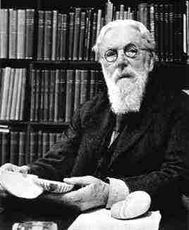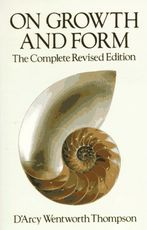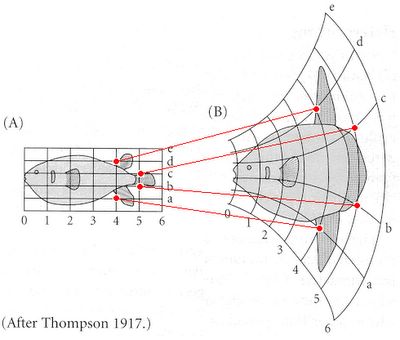Small body size and extreme cortical bone remodeling indicate phyletic dwarfism in Magyarosaurus dacus (Sauropoda: Titanosauria). 2010. K. Stein, et al. PNAS, Published online before print April 30.
In 1895, the sister of a eccentric palaeontologist Franz Baron Nopcsa discovered small dinosaur bones on their family estate in Transylvania. Nopcsa interpreted these as the remains of dwarfed animals that had once lived on an island. Among these finds were a number of bones belonging to a sauropod dinosaur which Nopcsa named Magyarosaurus dacus, after his native country. New research on the microanatomy of these bones prove that the little dinosaur was fully grown.
"Our study shows that dinosaurs on islands were subject to the same ecological and evolutionary processes that shape modern mammals," explains Martin Sander. "We were also able to demonstrate that the bigger bones found in that area belong to a different dinosaur species." Whether they come from stray animals who swam to the island from the mainland, or from large ancestors of the dwarf Magyarosaurus, remains a secret shrouded in the mists of pre-historic time. link
Senin, 03 Mei 2010
Minggu, 02 Mei 2010
Born This Day: Sir D'Arcy Thompson
From cscs.umich.edu:
D'Arcy Thompson (May 2, 1860 – June 21, 1948) was a British biologist whose masterwork, On Growth and Form, is a profound consideration of the shapes of living things, starting from the simple premise that "everything is the way it is because it got that way." Hence one must study not only finished forms, but also the forces that moulded them: "the form of an object is a 'diagram of forces', in this sense, at least, that from it we can judge of or deduce the forces that are acting or have acted upon it."
finished forms, but also the forces that moulded them: "the form of an object is a 'diagram of forces', in this sense, at least, that from it we can judge of or deduce the forces that are acting or have acted upon it."
Now by "forces" Thompson meant forces, and one of his great themes is the tremendous light cast on living things by using mathematics to describe their shapes and fairly simple physics and chemistry to explain them. In other words, Thompson wrote a thousand page treatise on self-organization long before the word existed. one another. The most thoroughly worked out modern example of this is Raup's analysis of snail shell shapes with a morphospace.
one another. The most thoroughly worked out modern example of this is Raup's analysis of snail shell shapes with a morphospace.
With some simplification, the axes on the fish grids in here or the snails of the morphospace can be thought of as growth gradients. The evolutionary change between the species would then have been produced by a genetic change in the regulatory mechanisms controlling those gradients.
If we looked at these fish without the grids we might think that an evolutionary change from one into the other would be at least moderately complicated. The interest of D'Arcy Thompson's diagrams is then to show that shape changes could have been produced by heterochrony - a change in the rate or timing of development of some cell lines in the body relative to others.

Figure: a D'Arcy Thompson transformational diagram. The shapes of two species of fish have been plotted on Cartesian grids. Image from HERE.
D'Arcy Thompson (May 2, 1860 – June 21, 1948) was a British biologist whose masterwork, On Growth and Form, is a profound consideration of the shapes of living things, starting from the simple premise that "everything is the way it is because it got that way." Hence one must study not only
 finished forms, but also the forces that moulded them: "the form of an object is a 'diagram of forces', in this sense, at least, that from it we can judge of or deduce the forces that are acting or have acted upon it."
finished forms, but also the forces that moulded them: "the form of an object is a 'diagram of forces', in this sense, at least, that from it we can judge of or deduce the forces that are acting or have acted upon it."Now by "forces" Thompson meant forces, and one of his great themes is the tremendous light cast on living things by using mathematics to describe their shapes and fairly simple physics and chemistry to explain them. In other words, Thompson wrote a thousand page treatise on self-organization long before the word existed.
From Blackwell Publishing:D'Arcy Thompson found that related species superficially looking very different could in some cases be represented as simple Cartesian transformations of
 one another. The most thoroughly worked out modern example of this is Raup's analysis of snail shell shapes with a morphospace.
one another. The most thoroughly worked out modern example of this is Raup's analysis of snail shell shapes with a morphospace.With some simplification, the axes on the fish grids in here or the snails of the morphospace can be thought of as growth gradients. The evolutionary change between the species would then have been produced by a genetic change in the regulatory mechanisms controlling those gradients.
If we looked at these fish without the grids we might think that an evolutionary change from one into the other would be at least moderately complicated. The interest of D'Arcy Thompson's diagrams is then to show that shape changes could have been produced by heterochrony - a change in the rate or timing of development of some cell lines in the body relative to others.

Figure: a D'Arcy Thompson transformational diagram. The shapes of two species of fish have been plotted on Cartesian grids. Image from HERE.
Sabtu, 01 Mei 2010
Published This Day: Species Plantarum by Linnaeus
In 1753, Carolus Linnaeus published the first edition of his Species Plantarum in which he gave systematic names to plants that are still in use today. He was the first to frame principles for defining genera and species of organisms and to create a uniform system for naming them. He is often called the father of classification, and he extended the familiar scheme of dual Latin names to identify animals in 1758. The Species Plantarum was taken by international consent in 1905 as the starting point for modern botanical nomenclature. From Today In Science History.
Langganan:
Postingan (Atom)

